English Heritage sites near Kimbolton Parish
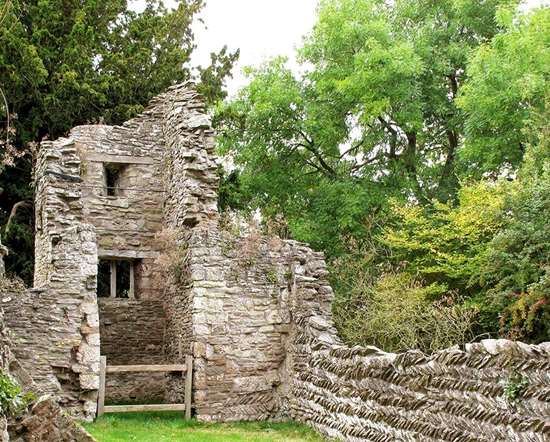
EDVIN LOACH OLD CHURCH
9 miles from Kimbolton Parish
The ruins of an 11th century and later church built within the earthworks of a Norman motte and bailey castle, with a Victorian church nearby. The site of hundreds of years of worship.
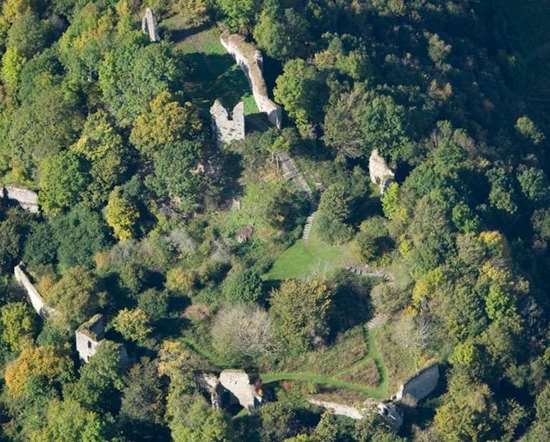
WIGMORE CASTLE
9 miles from Kimbolton Parish
One of the most important castles in the history of the Welsh Marches and major centre of power for over 500 years, hosting royalty on several occasions. Deliberately demolished during the Civil War.
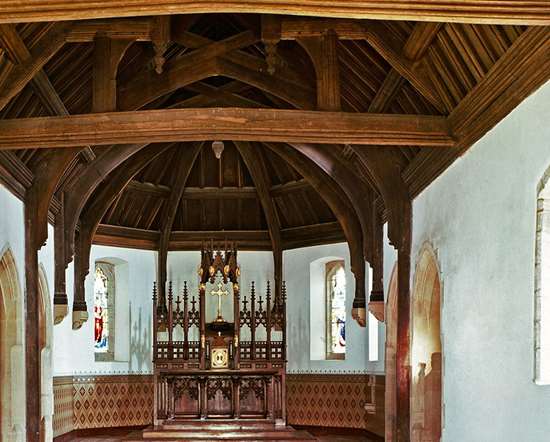
ROTHERWAS CHAPEL
14 miles from Kimbolton Parish
Family chapel of the Bodenham family. The originally simple medieval building has a fine Elizabethan timber roof, 18th century tower and striking Victorian interior decoration and furnishings.
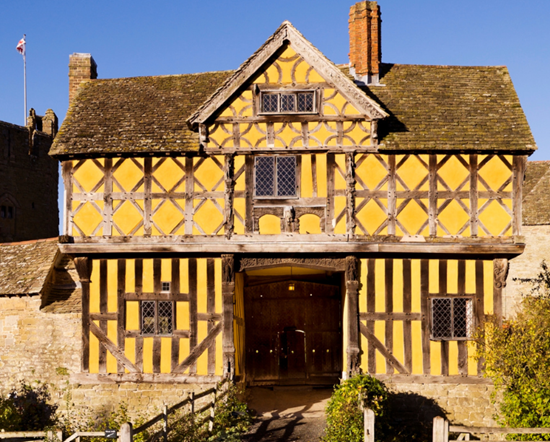
STOKESAY CASTLE
14 miles from Kimbolton Parish
Stokesay Castle is quite simply the finest and best preserved fortified medieval manor house in England.
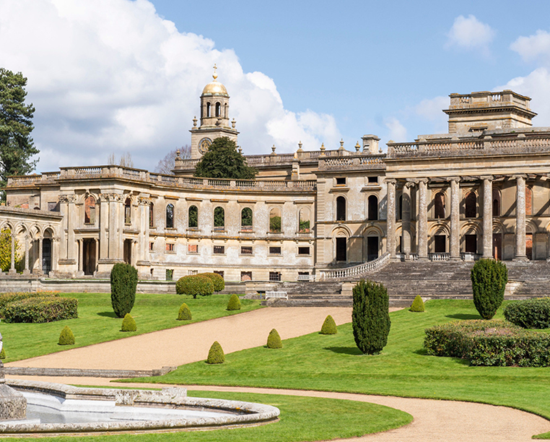
WITLEY COURT AND GARDENS
15 miles from Kimbolton Parish
A hundred years ago, Witley Court was one of England's great country houses, hosting many extravagant parties. Today it is a spectacular ruin, the result of a disastrous fire in 1937.
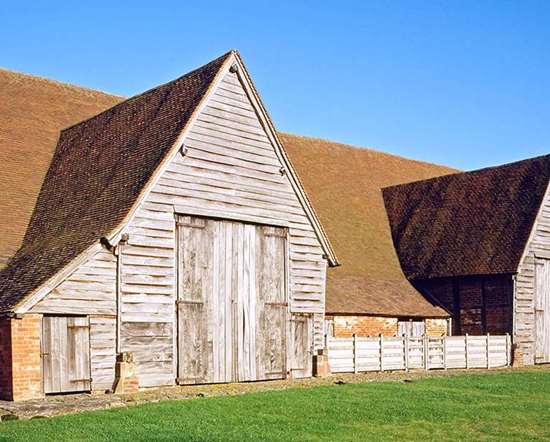
LEIGH COURT BARN
16 miles from Kimbolton Parish
An outstanding display of English medieval carpentry, this mighty timber-framed barn is the largest cruck structure in Britain.
Churches in Kimbolton Parish
Hamnish: St Dubricius & All Saints
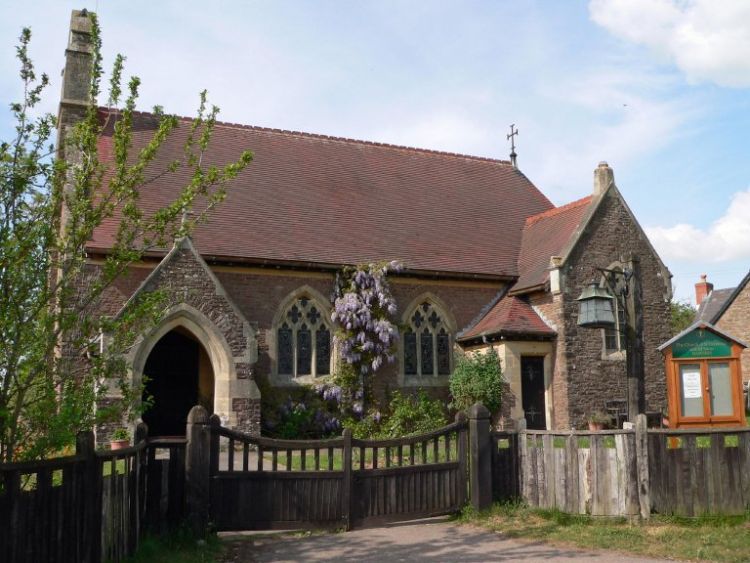
Hamnish
Leominster
01568 369307
https://www.easternparishes.org/
St Dubricius and All Saints' Church, Hamnish, is part of the Leominster Team Ministry.
Services and Events to which you would be most welcome.
Consecrated on Ascension Day 1910 the church was designed by the Architect W.S. Weatherley, and built by Messrs Bowers of Hereford in local sandstone with Corsham dressings. Mr. A. W. Walker of Hennor House gave £1,000 to begin the building and the parishioners raised the final £688.
The church is in a compact, decorated ‘Victorian' style. The Nave, with retriculated tracery, has a bell-cote and porch. A small vestry is attached to the apsed chancel. The original furnishings all survive with a decorated font, carved oak pulpit and pipe organ. The reredos was gilded and painted by Innes Fripp in 1912. The stain glass windows throughout the building are exquisite. The Sub-Kempe apse windows are by C. C. Powell and were installed in 1918. Three nave windows are by Kempe and Co. installed in 1924, and a further four by Powell and Sons in 1914 and 1921.
Fifty years later a pair of wooden gates was erected to recognise the golden jubilee, and in 2010 the Bishop of Ludlow joined the congregation to celebrate the centenary of the church. Two services a month are held with special services at Easter, Christmas and the Patronal Festival.
The churchyard is immaculately maintained and the building cared for by parishioners who value its special place in the community.
The history of Hamnish village hall is also very interesting. The building was erected in 1887. Often known locally as the ‘Tin Tabernacle', it was an early example of a building that could be bought by mail order and shipped to the colonies throughout the British Empire as a 'flat pack' Mission Church. A complete example of this type of early building is preserved in the Avoncroft Museum near Bromsgrove, but photographs displayed on the wall at Hamnish village hall show how the original iron church would have looked at the end of the 19th Century.
In 1910 the spirelet was removed and the bell hung in the new stone church of St. Dubricius and All Saints. The old building was then converted into the parish hall. Some of the original benches remain inside the building.
Kimbolton: St James the Great

Kimbolton
Leominster
01568 369307
https://www.easternparishes.org/
St James the Great Church, Kimbolton, is part of the Leominster Team Ministry.
Services and Events to which you would be most welcome.
The Parish Church of Kimbolton stands on elevated land to the north of the village. The dedication to St. James the Great is connected to the possession of relics belonging to the said saint, which are kept at Leominster Priory. Chapels near the Benedictine Priory were part of the ministry of the monks, who not only took services but also collected tithes in Kimbolton.
The Norman chancel was built in the 12th century and features a round headed window on the East elevation. There is evidence of a door of twelfth century construction with chamfered jambs and a square head which has long since been blocked up.
There are fine examples of early sixteenth century linen fold panelling behind the choir stalls, and a memorial tablet to Joyce Hibbyns dated 1614. The nave measures over sixty two feet in length and was largely built in the thirteenth century.
The Tower, probably built in the thirteenth century, is surmounted by a timber brooch spire and finished in oak shingles. It is over ninety feet in height and is comprised of three storeys. Some of the timbers are original but not the central post. The brooch spire is the defining feature of the church, standing as it does in such an elevated position. Over the centuries it has been struck by lightning several times causing a fire in September 1735 and extensive damage. In 1875 the lightning ran down for a distance of thirteen feet "scattering the shingles in all directions". Major repair work was completed on the tower at the beginning of the twenty first century by Spitlath Ltd. after a fund raising campaign that had lasted twenty five years. The electrical system and many of the shingles and boards had been destroyed after rain had poured into the tower.
The modern chancel arch was erected in 1872 and the church was extensively restored in 1875 as much of the structure had fallen into disrepair. A new arch was created into the South Transept, the door in the West wall blocked up, and memorials moved from the nave North wall. These are amongst the oldest in the building, including a memorial to Reverend Hugh Morgan (died 1759 aged eighty five) a minister in the parish for fifty three years. The architect Haddon was responsible for the 1875 restoration which also included the round font and stone pulpit. Further work was carried out by Ewan Christian and W.S. Wetherby in the chancel.
Heaton, Butler and Bayne were responsible for most of the beautiful nineteenth and early twentieth century stained glass windows, several of which are in memory of the Hutchinson family. The Reverend Thomas Hutchinson was the incumbent in Kimbolton from 1851 until 1901. His aunt, Mary Hutchinson, married the poet William Wordsworth in 1802.
The new pipe organ was built in 1984 by George Sixsmith of Ashton-under-Lyme.
For those interested in genealogical research please note that all the parish records are deposited in the Hereford Record Office.
The church is a focal point in the village and a constant reminder of the faith of those who built it.
No churches found in Kimbolton Parish
